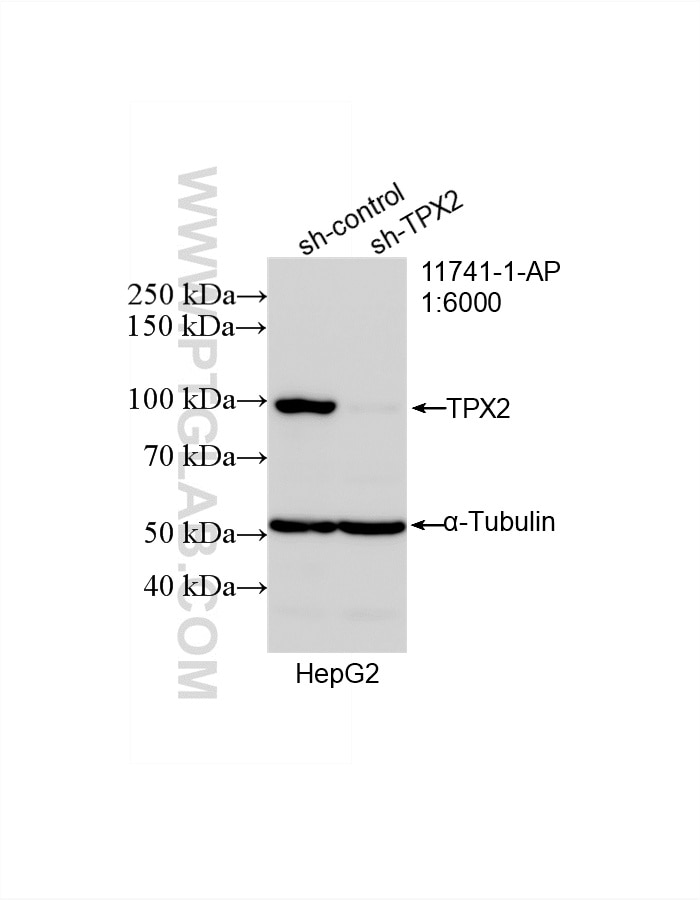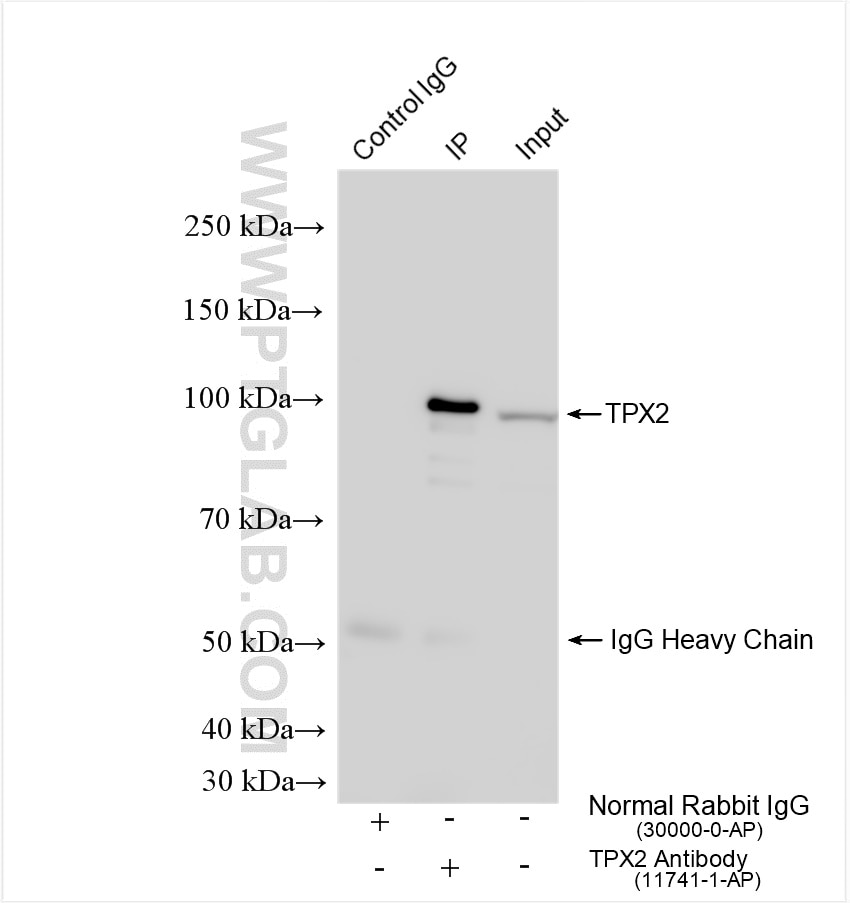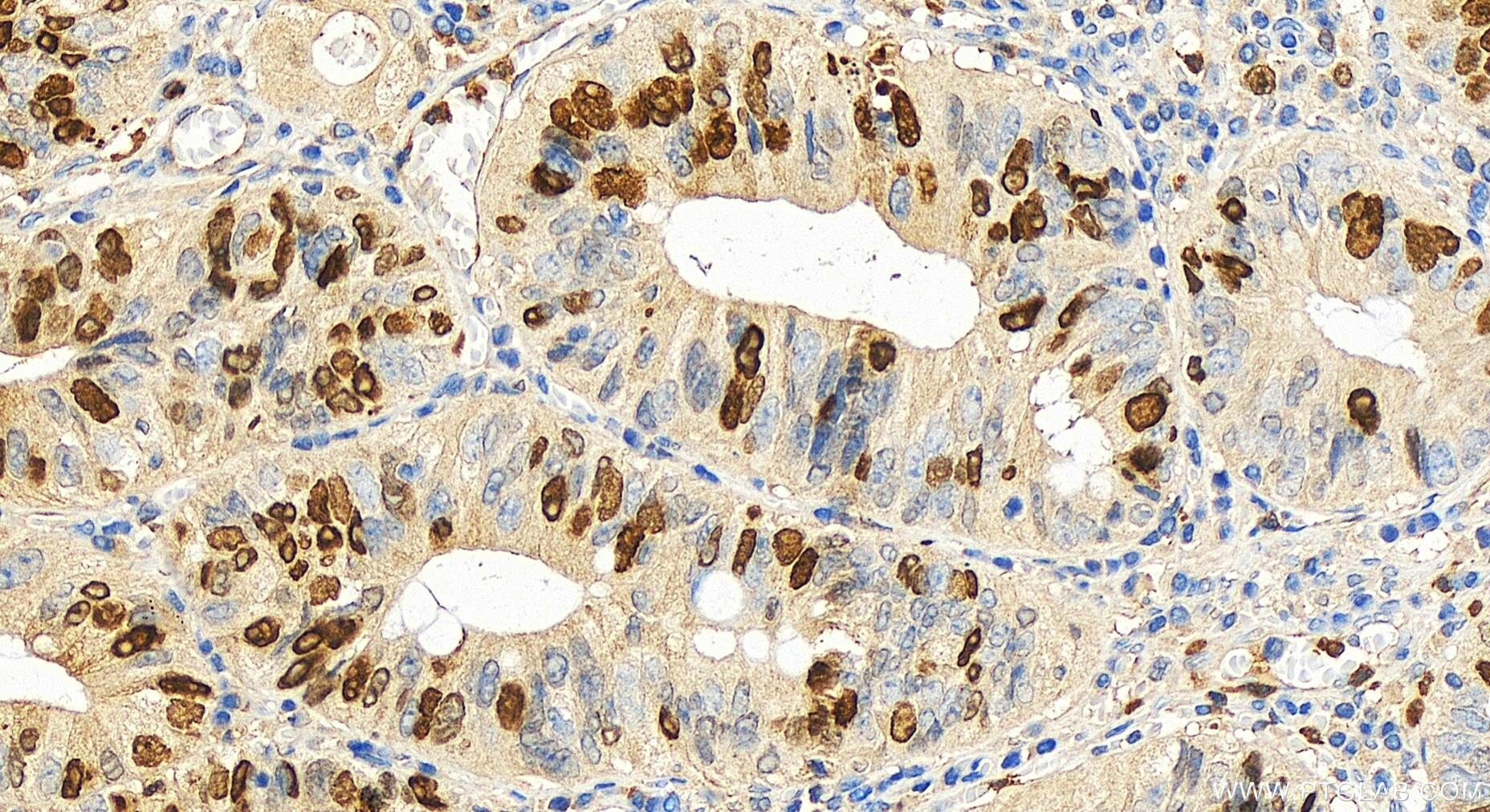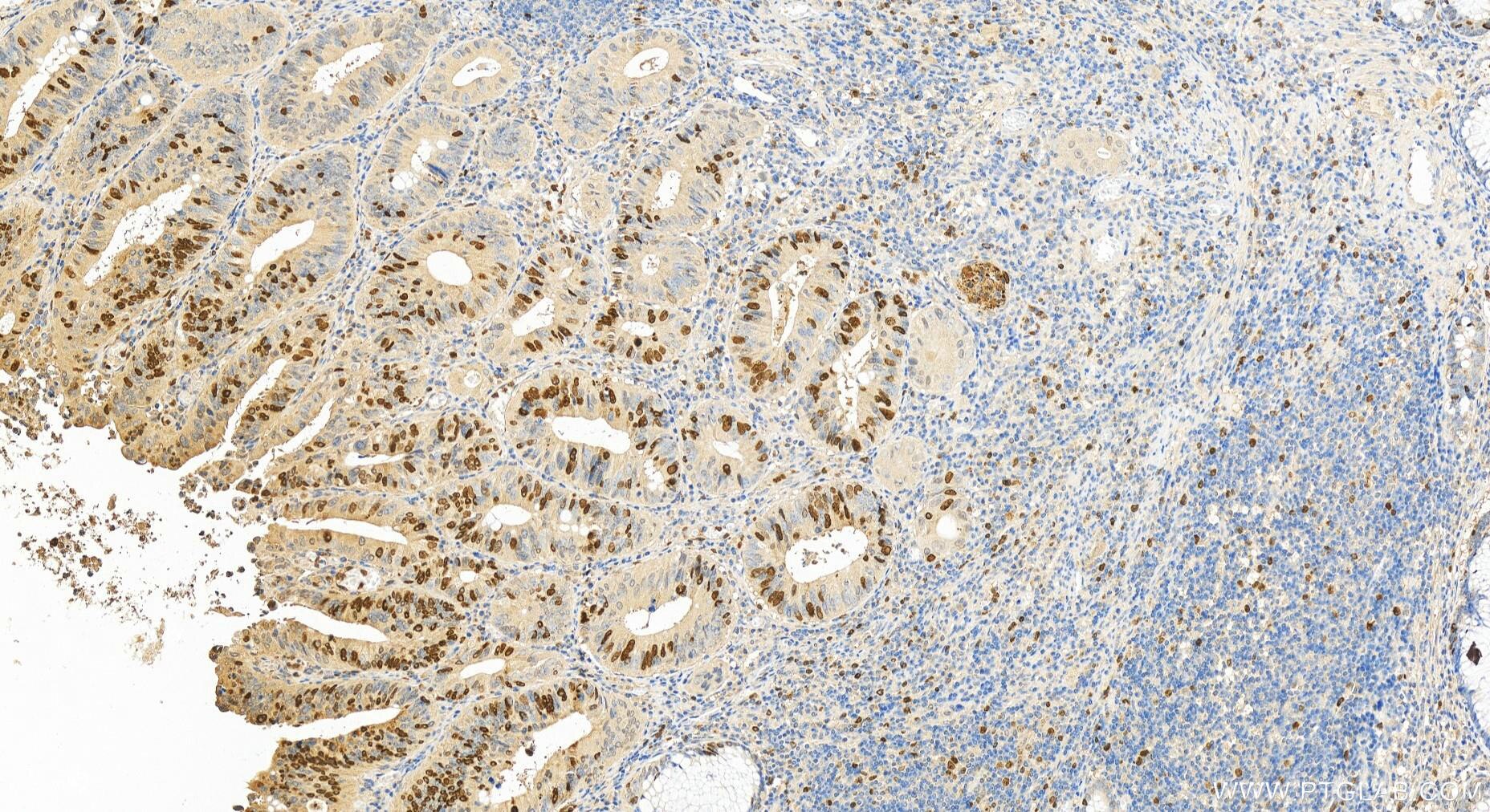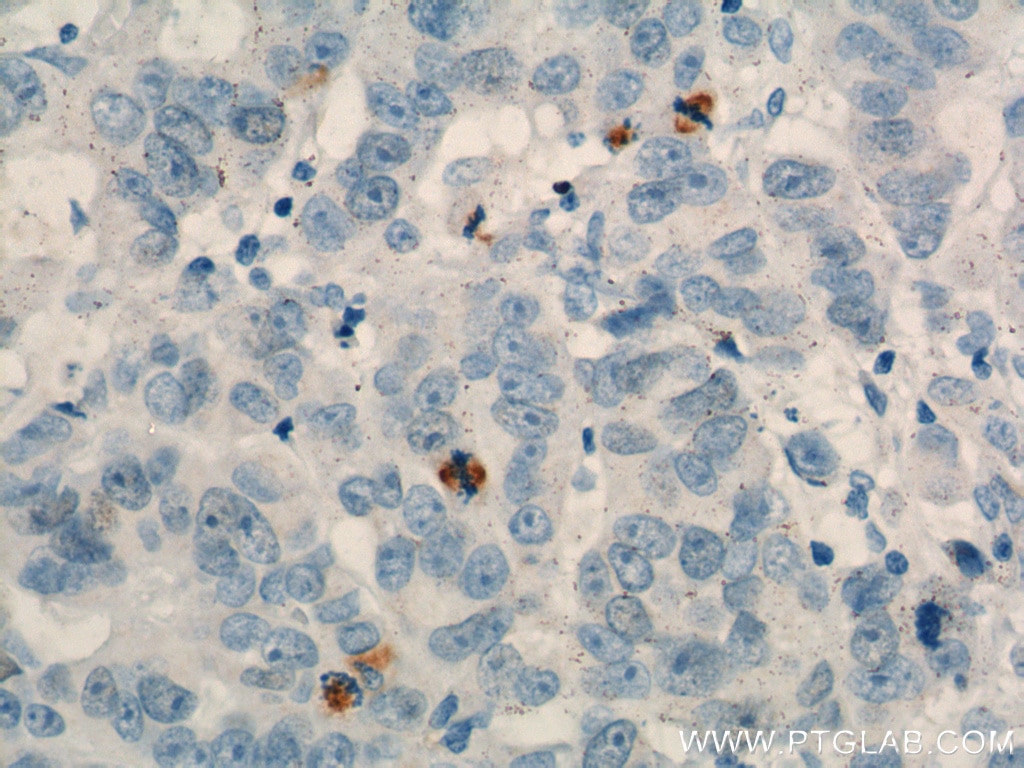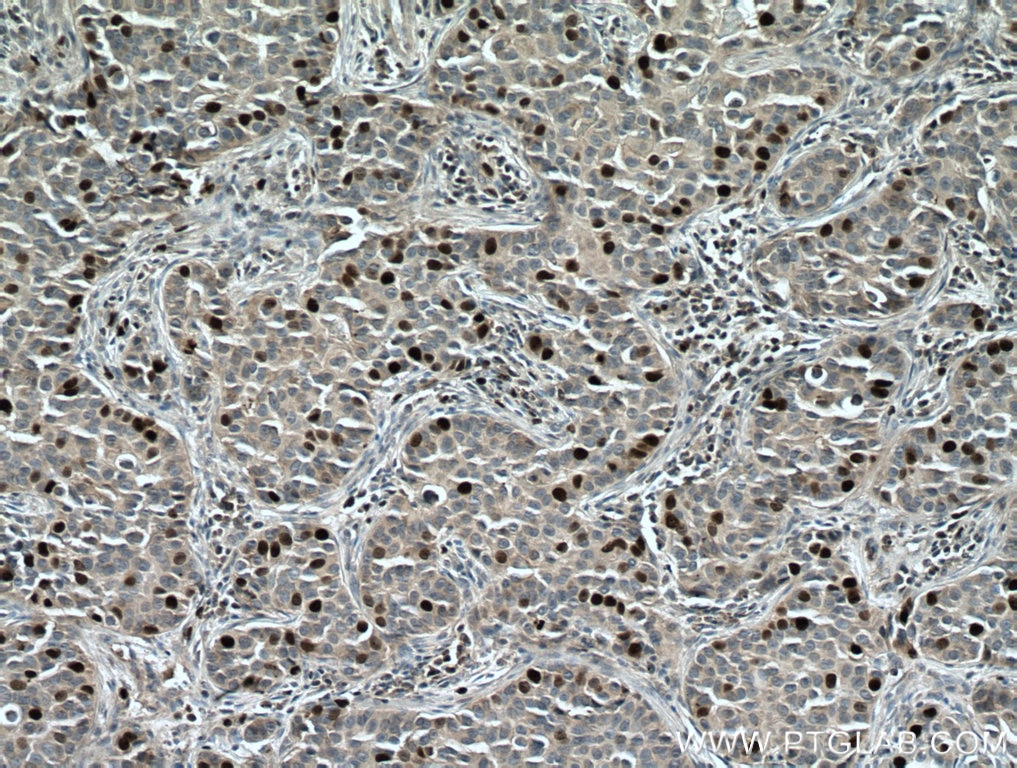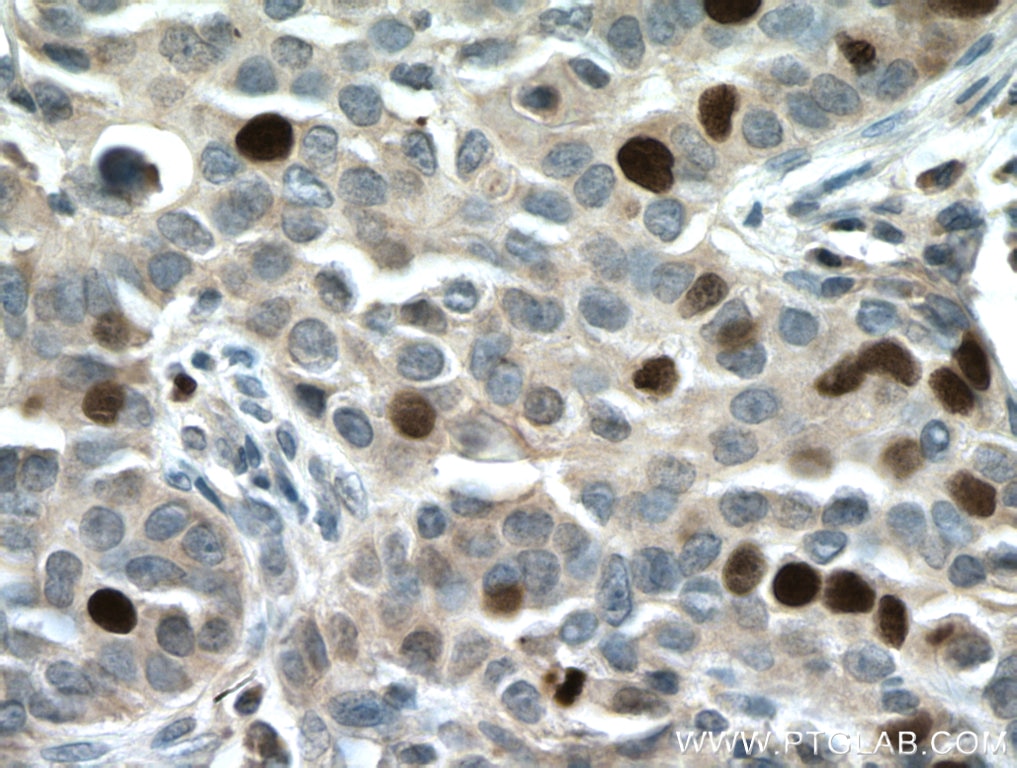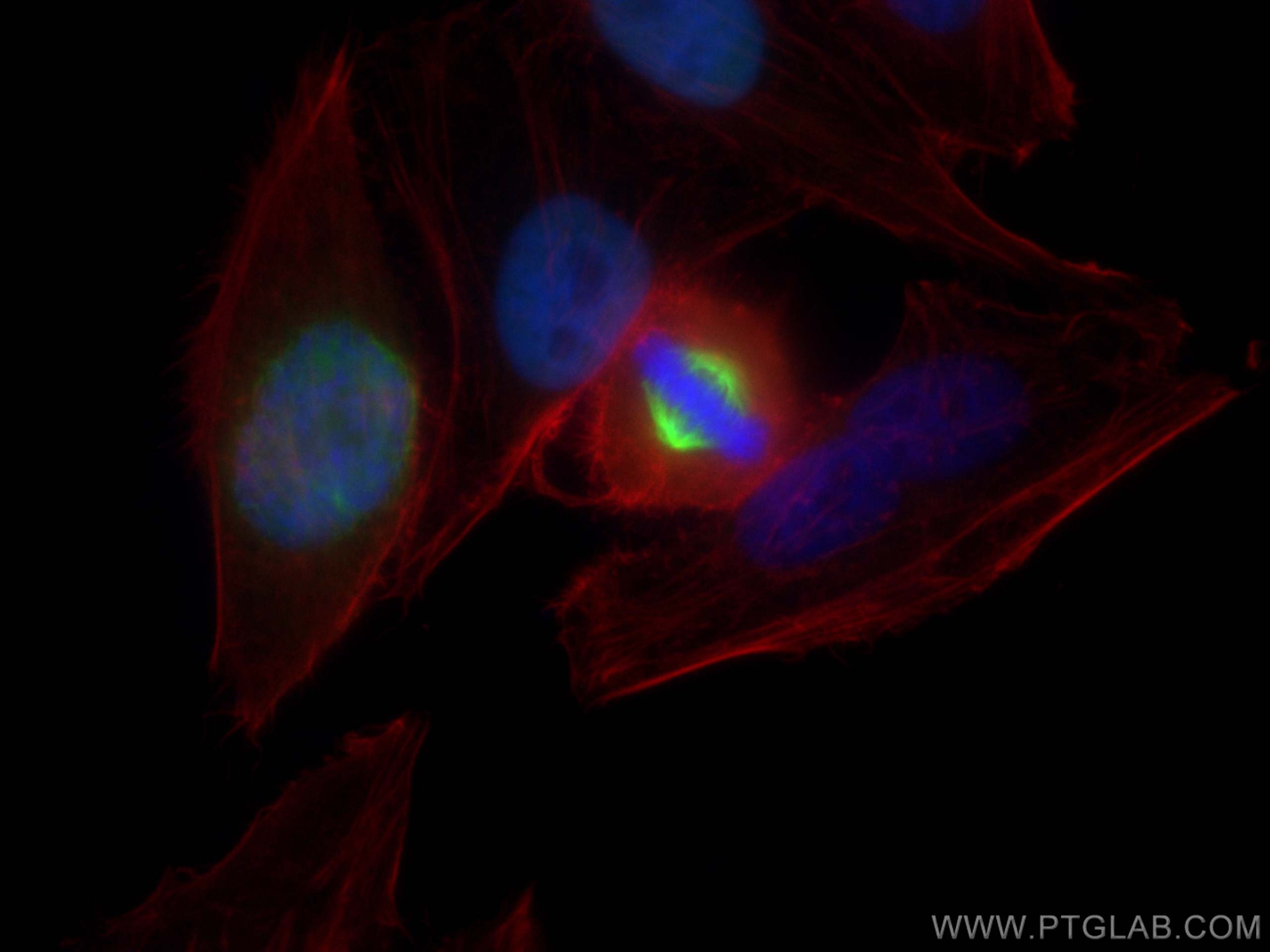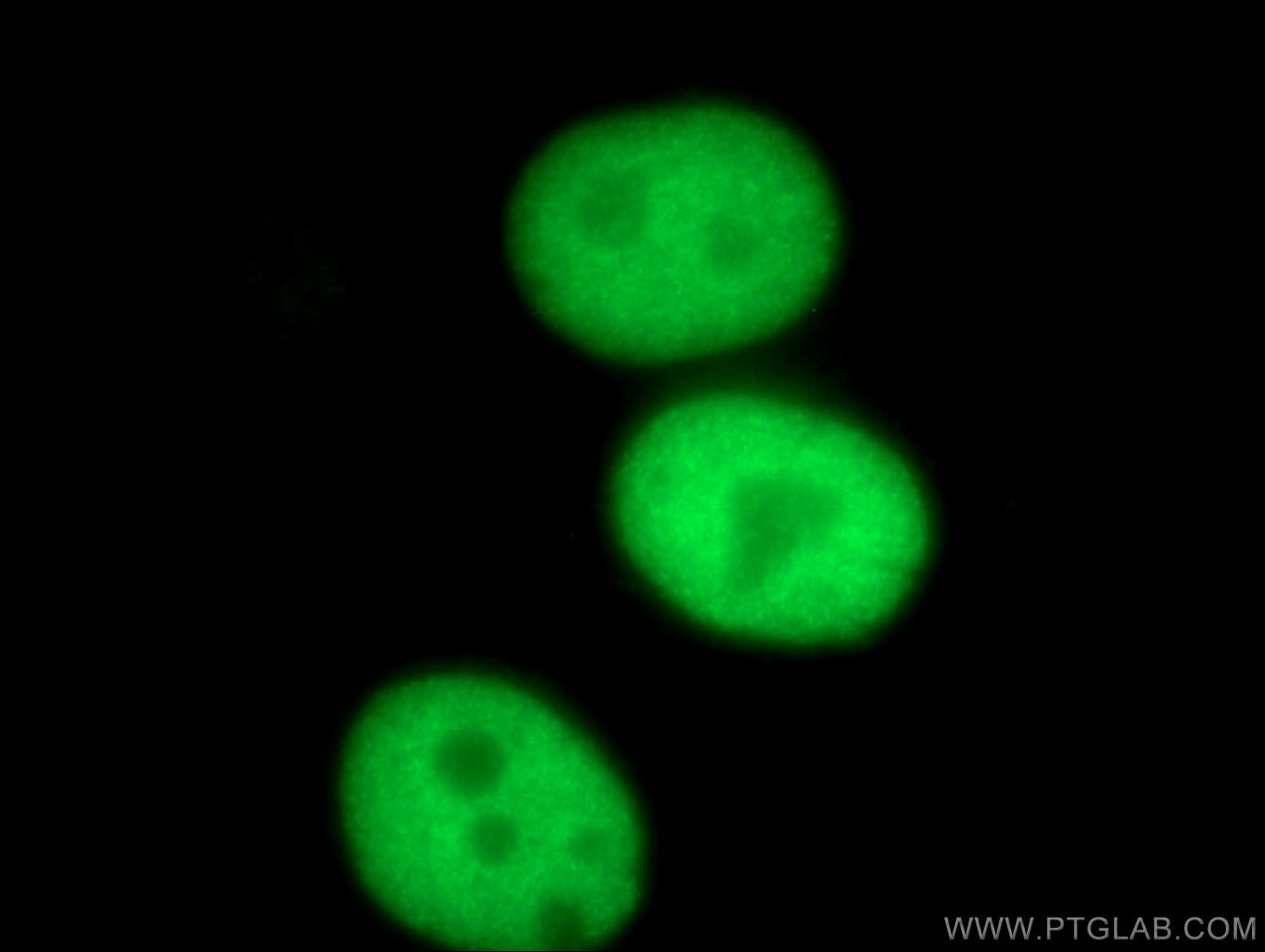- Phare
- Validé par KD/KO
Anticorps Polyclonal de lapin anti-TPX2
TPX2 Polyclonal Antibody for WB, IHC, IF/ICC, IP, ELISA
Hôte / Isotype
Lapin / IgG
Réactivité testée
Humain, rat, souris
Applications
WB, IHC, IF/ICC, IP, CoIP, ChIP, ELISA
Conjugaison
Non conjugué
N° de cat : 11741-1-AP
Synonymes
Galerie de données de validation
Applications testées
| Résultats positifs en WB | cellules HepG2, cellules HeLa, cellules K-562, cellules SMMC-7721 |
| Résultats positifs en IP | cellules HeLa, |
| Résultats positifs en IHC | tissu de cancer du côlon humain, tissu de cancer de la prostate humain, tissu de cancer du sein humain il est suggéré de démasquer l'antigène avec un tampon de TE buffer pH 9.0; (*) À défaut, 'le démasquage de l'antigène peut être 'effectué avec un tampon citrate pH 6,0. |
| Résultats positifs en IF/ICC | cellules HepG2, cellules HeLa |
Dilution recommandée
| Application | Dilution |
|---|---|
| Western Blot (WB) | WB : 1:2000-1:10000 |
| Immunoprécipitation (IP) | IP : 0.5-4.0 ug for 1.0-3.0 mg of total protein lysate |
| Immunohistochimie (IHC) | IHC : 1:300-1:1200 |
| Immunofluorescence (IF)/ICC | IF/ICC : 1:200-1:800 |
| It is recommended that this reagent should be titrated in each testing system to obtain optimal results. | |
| Sample-dependent, check data in validation data gallery | |
Applications publiées
| KD/KO | See 2 publications below |
| WB | See 16 publications below |
| IHC | See 4 publications below |
| IF | See 6 publications below |
| CoIP | See 1 publications below |
| ChIP | See 1 publications below |
Informations sur le produit
11741-1-AP cible TPX2 dans les applications de WB, IHC, IF/ICC, IP, CoIP, ChIP, ELISA et montre une réactivité avec des échantillons Humain, rat, souris
| Réactivité | Humain, rat, souris |
| Réactivité citée | Humain, souris |
| Hôte / Isotype | Lapin / IgG |
| Clonalité | Polyclonal |
| Type | Anticorps |
| Immunogène | TPX2 Protéine recombinante Ag2334 |
| Nom complet | TPX2, microtubule-associated, homolog (Xenopus laevis) |
| Masse moléculaire calculée | 747 aa, 86 kDa |
| Poids moléculaire observé | 100 kDa |
| Numéro d’acquisition GenBank | BC020207 |
| Symbole du gène | TPX2 |
| Identification du gène (NCBI) | 22974 |
| Conjugaison | Non conjugué |
| Forme | Liquide |
| Méthode de purification | Purification par affinité contre l'antigène |
| Tampon de stockage | PBS with 0.02% sodium azide and 50% glycerol |
| Conditions de stockage | Stocker à -20°C. Stable pendant un an après l'expédition. L'aliquotage n'est pas nécessaire pour le stockage à -20oC Les 20ul contiennent 0,1% de BSA. |
Informations générales
TPX2, also known as DIL2, p10, is a microtubule organization- and cell cycle-associated protein. In the early stage of mitosis, TPX2 is released in a RanGTP-dependent manner and plays a significant role in mitotic spindle formation and subsequent proper segregation of chromosomes during cell division. Furthermore, during interphase, TPX2 is involved in DNA damage response by regulation of γ-H2AX signals(PMID: 25914189). Aberrant expression of TPX2 leads to improper spindle assembly and chromosomal instability. Overexpressed in cancers, TPX2 is being established as the marker for the diagnosis and prognosis of malignancies(PMID: 24556998).
Protocole
| Product Specific Protocols | |
|---|---|
| WB protocol for TPX2 antibody 11741-1-AP | Download protocol |
| IHC protocol for TPX2 antibody 11741-1-AP | Download protocol |
| IF protocol for TPX2 antibody 11741-1-AP | Download protocol |
| IP protocol for TPX2 antibody 11741-1-AP | Download protocol |
| Standard Protocols | |
|---|---|
| Click here to view our Standard Protocols |
Publications
| Species | Application | Title |
|---|---|---|
J Cell Biol WDR62 regulates spindle dynamics as an adaptor protein between TPX2/Aurora A and katanin. | ||
EMBO Rep Mcrs1 regulates G2/M transition and spindle assembly during mouse oocyte meiosis | ||
J Cell Sci Loss of protein phosphatase 6 in oocytes causes failure of meiosis II exit and impaired female fertility. | ||
J Cell Sci Importin α phosphorylation promotes TPX2 activation by GM130 to control astral microtubules and spindle orientation. | ||
Front Physiol Dysfunction of Sister Chromatids Separation Promotes Progression of Hepatocellular Carcinoma According to Analysis of Gene Expression Profiling. |

